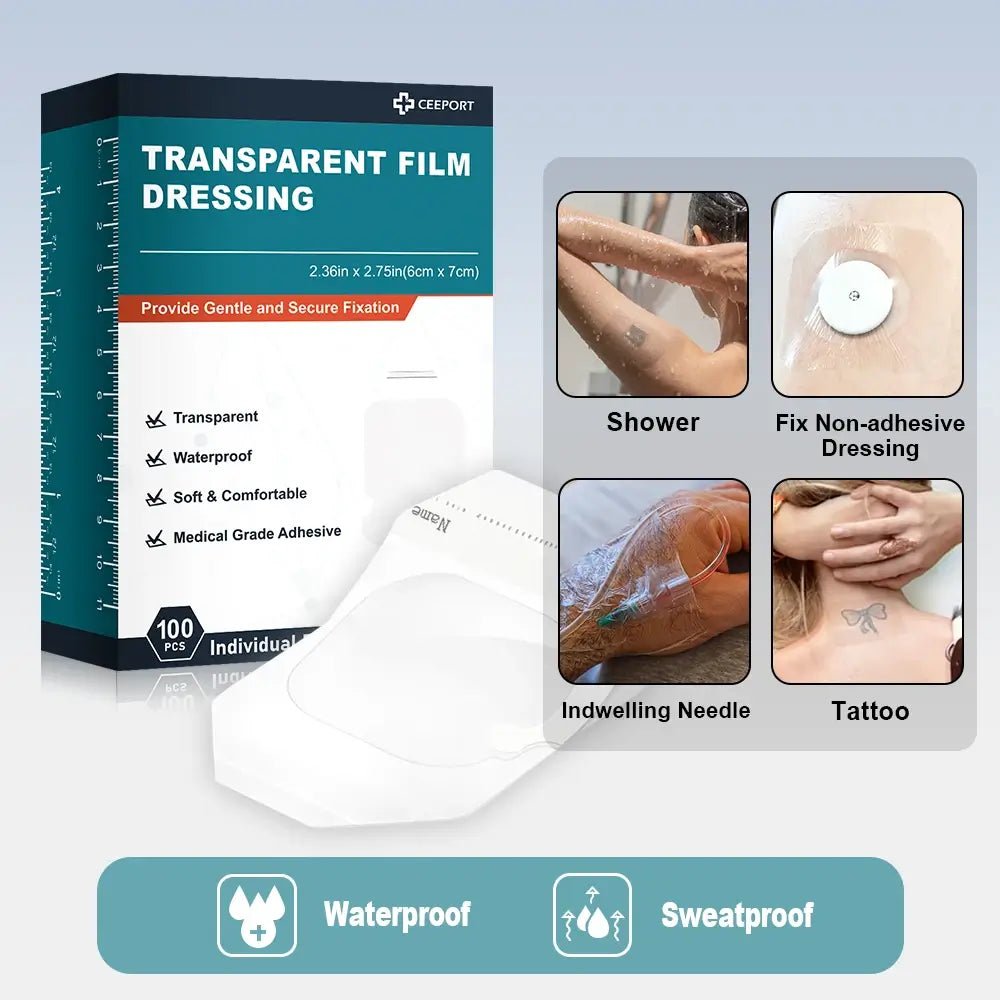
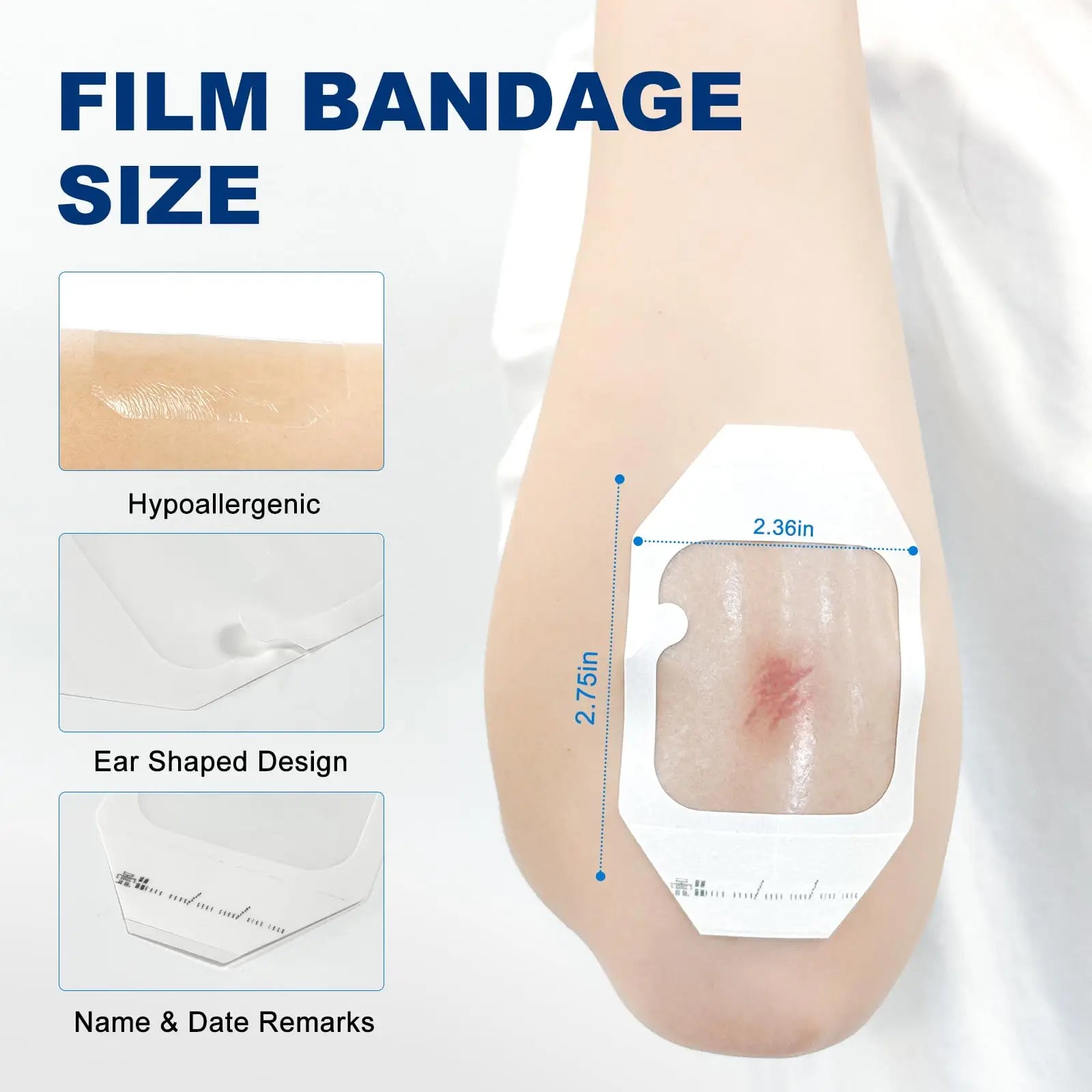


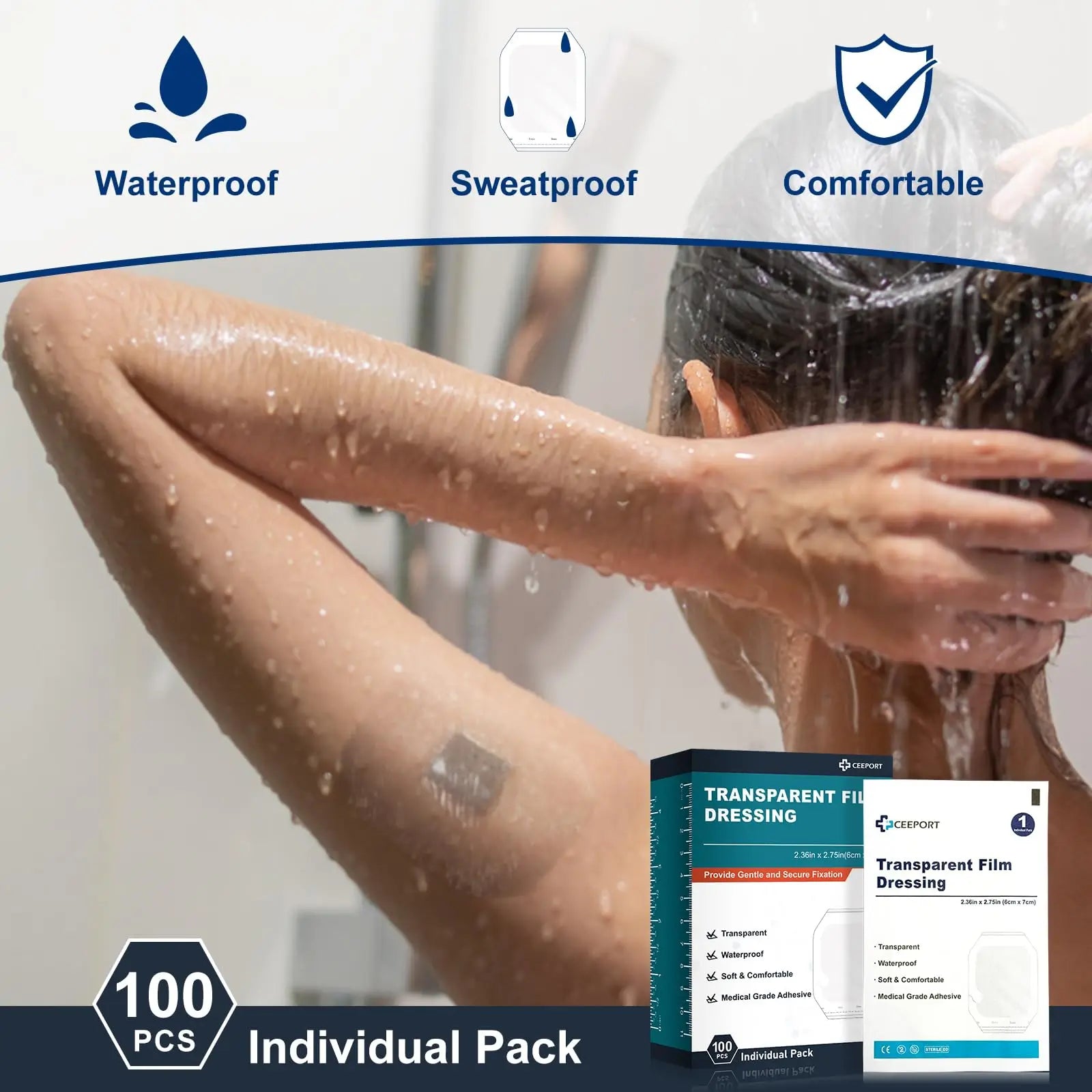
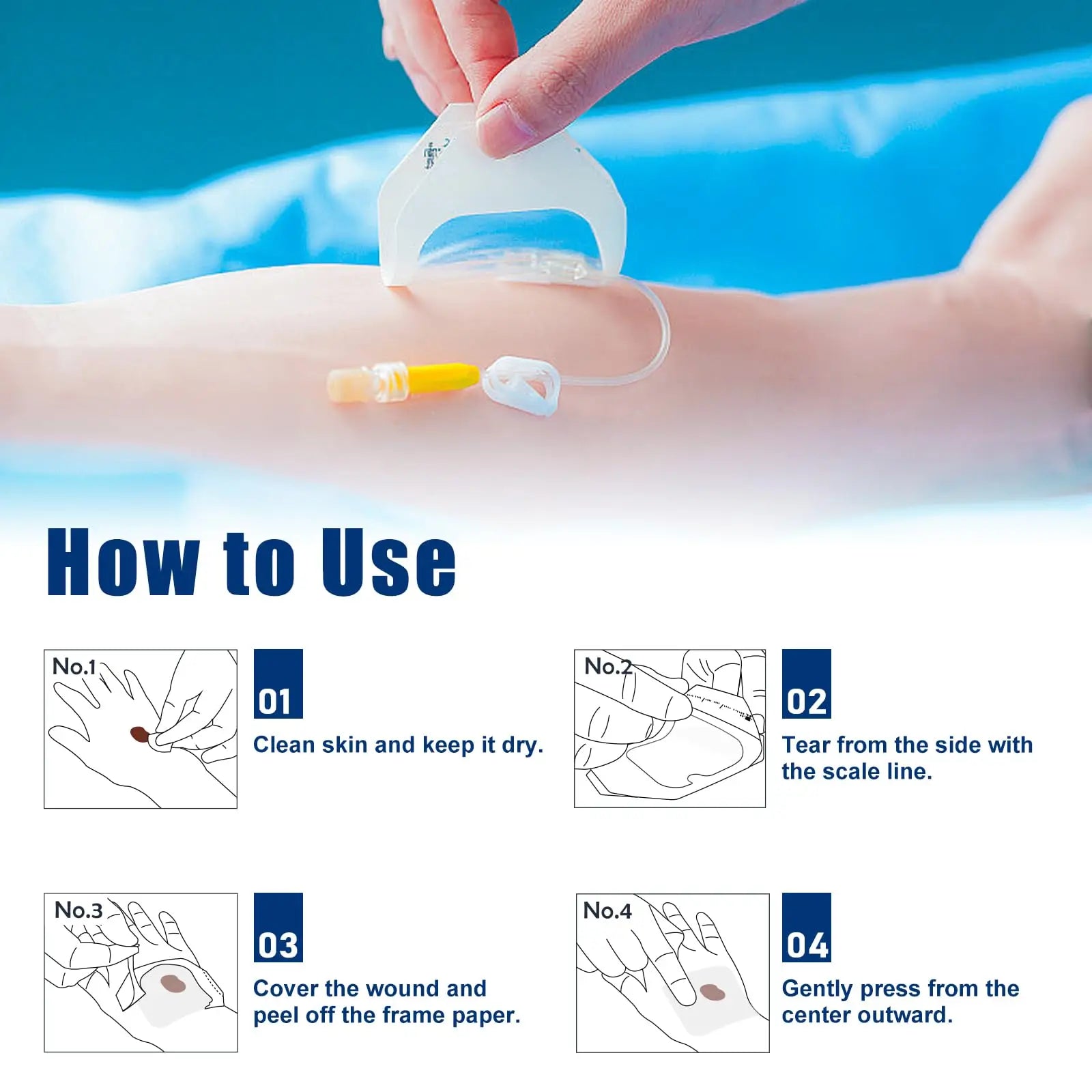
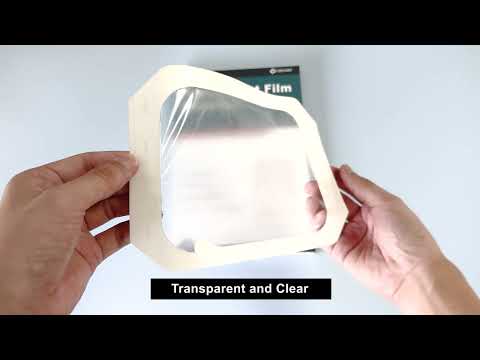
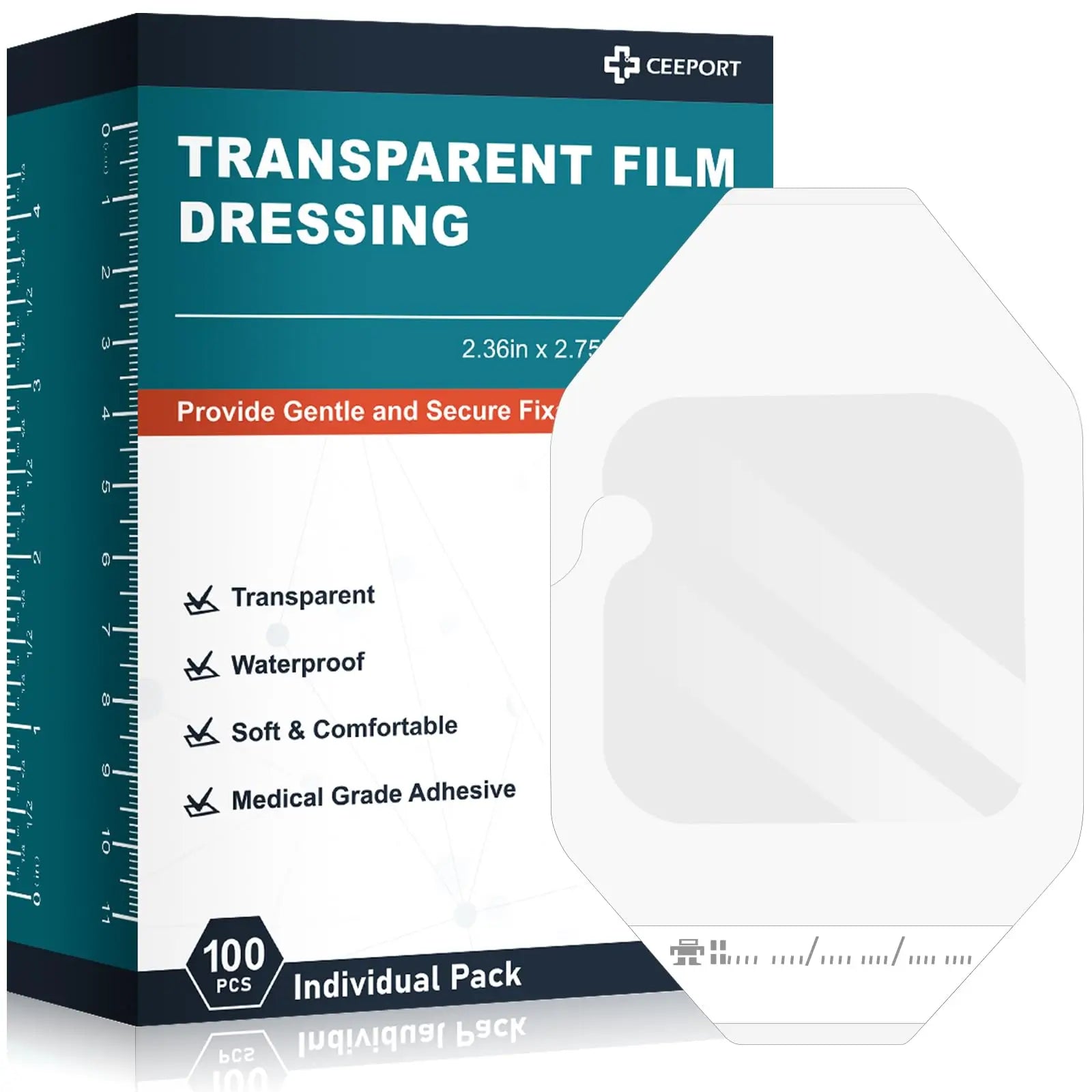
Waterproof Dressings for Wounds – Keep Healing on Track
Indications
- Partial-thickness wounds.
- Full-thickness wounds(secondary dressing).
- It can be used to secure and protect surface catheters such as indwelling needles and central venous catheters, shielding the exposed puncture sites from contamination and protecting superficial wounds from external pollution.
- Skin tears, lacerations and abrasions and to help prevent skin breakdown caused by friction to epidermis.
Pairs well with
DETAILS
Material
- Glassine paper frame backing
- PU film
- Acrylic adhesive
- Glasine paper release paper
Advantage
- An easy-to-use window frame delivery.
- Easy to remove the over exudates or sweat, which makes it easy to observe the wound.
- Soft, comfortable and hypoallergenic, can be applicable to every part of body.
- Strong viscosity, keep on the wound up to 7 days.
- Transparent dressing applicable for the wrapping and fixing of all kinds of wound.
Cautions
- Not suitable for infected wounds.
- Not suitable for wounds with a lot of exudate.
- Not suitable for wounds with too deep or cavities.
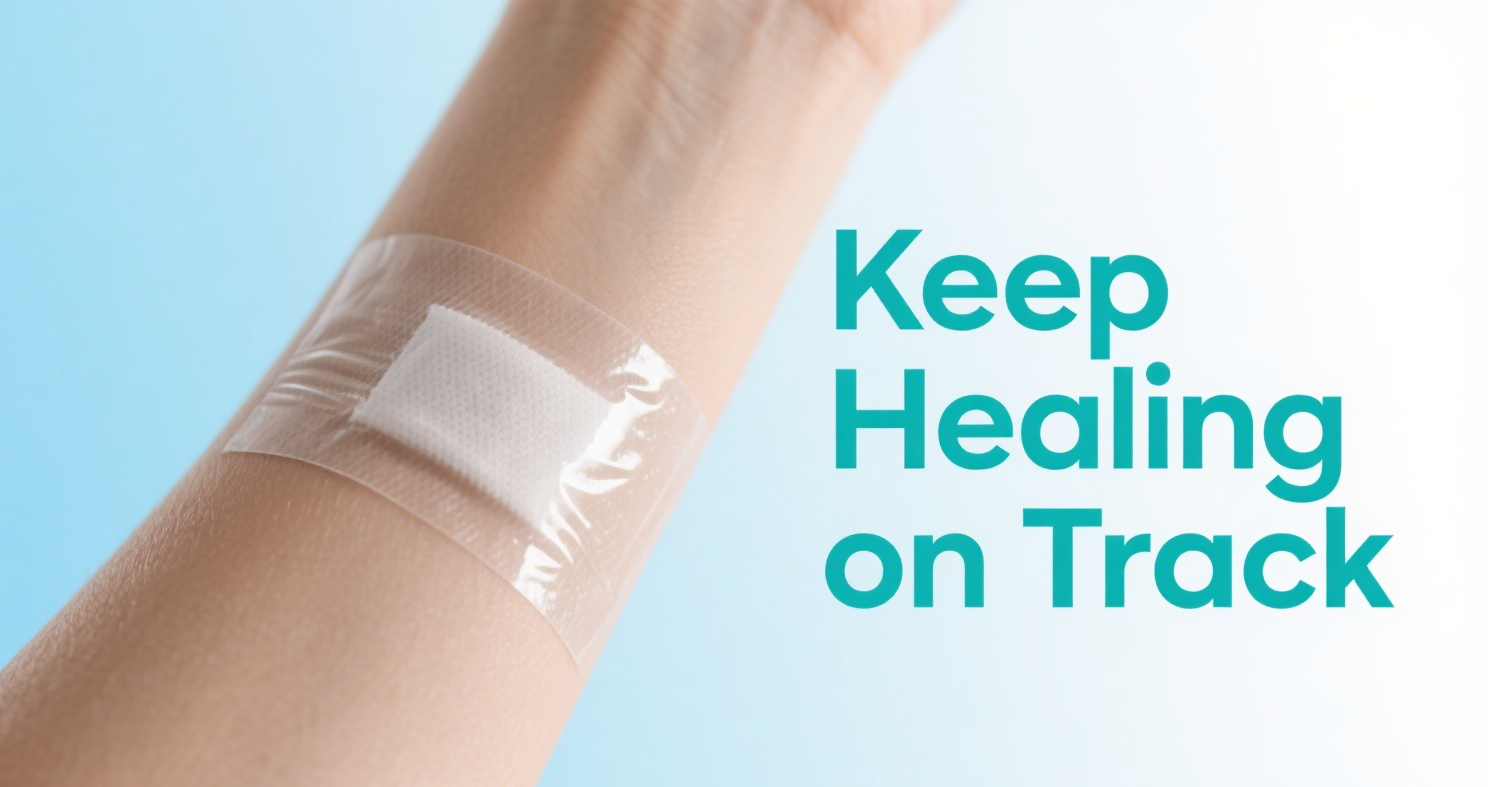
Keep Healing on Track with Waterproof Dressings for Wounds
Product Overview
Our waterproof dressings for wounds create a breathable yet fully water-resistant barrier, allowing you to shower, swim, or wash hands without interrupting healing. Made with a thin, flexible film, they conform to the skin’s natural contours, block out moisture and bacteria, and maintain an ideal environment for faster recovery.
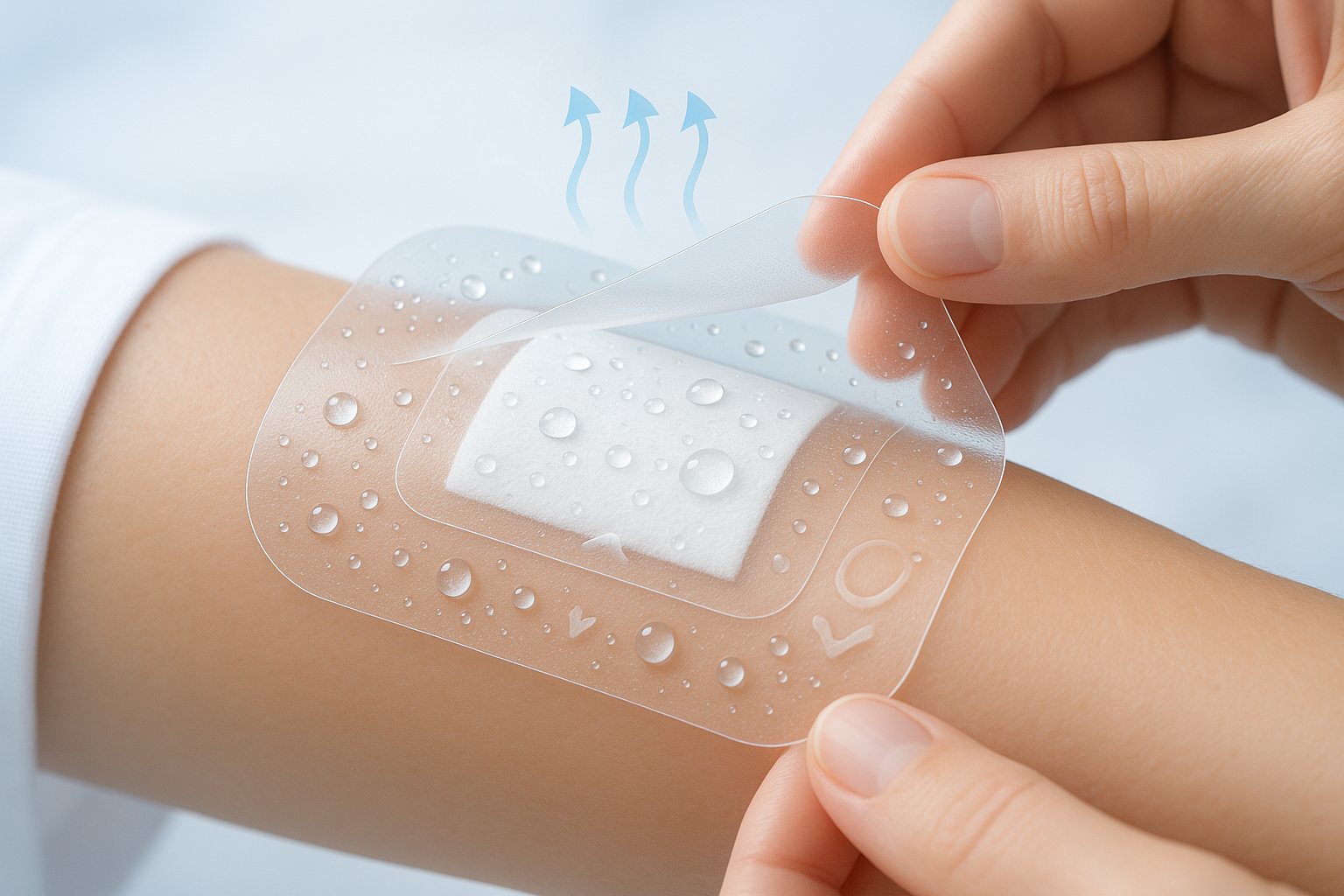
Key Features & Benefits
Waterproof Protection – Shields wounds from water, letting you shower or swim without worry.
Breathable Barrier – Allows airflow while blocking moisture and bacteria.
Flexible & Comfortable – Thin film conforms to skin contours for a secure, natural fit.
Supports Faster Healing – Maintains a stable, moist wound environment.
Everyday Convenience – Ideal for cuts, surgical wounds, and sensitive skin care.
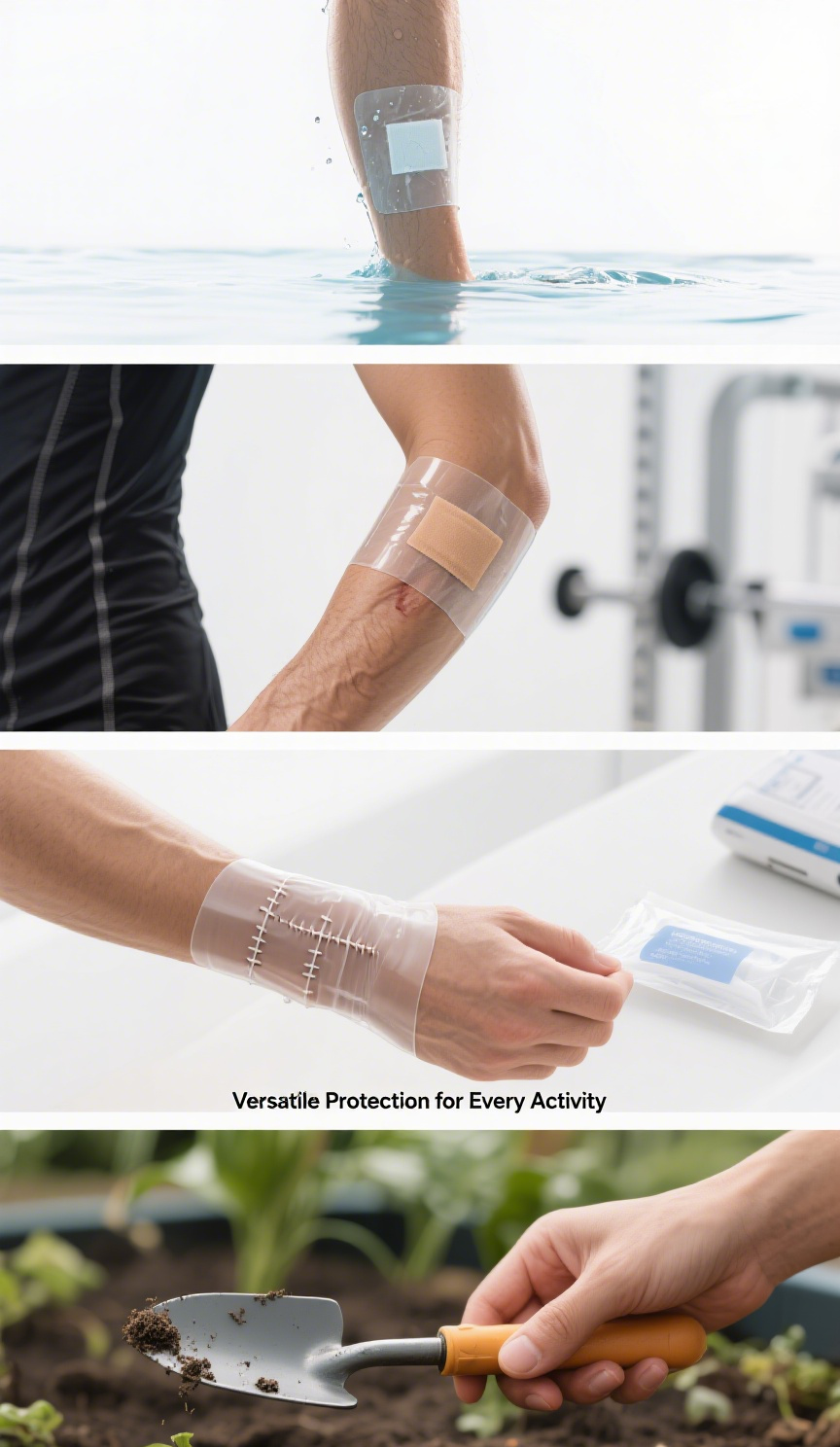
How to Use Waterproof Dressings For Wounds
- Clean & Dry the Area – Gently cleanse the wound and surrounding skin, then pat dry.
- Select the Right Size – Choose a dressing large enough to fully cover the wound with extra margin.
- Apply the Dressing – Remove the protective liner and place the waterproof dressing over the wound, smoothing edges to seal.
- Check the Seal – Ensure the dressing adheres securely to keep out water, moisture, and bacteria.
- Replace as Needed – Change the dressing daily or when it becomes loose, wet, or heavily soiled.
💡 Tip: Our waterproof dressings for wounds allow you to shower or wash hands without disturbing healing, making recovery more comfortable and convenient.
Ideal Use Cases
- Stay Active with Confidence – Our waterproof dressings for wounds let you shower, swim, or exercise without disrupting healing.
- Secure Coverage on Joints – Flexible film stays in place on elbows, knees, and other high-motion areas.
- Post-Surgical & Dermatology Care – Maintain sterile protection after minor surgeries, stitches, or skin treatments.
- Outdoor & Daily Activities – Perfect for hiking, gardening, or kayaking while safeguarding your wound recovery.
Easy to Use

Clean
Clean skin and keep it dry.
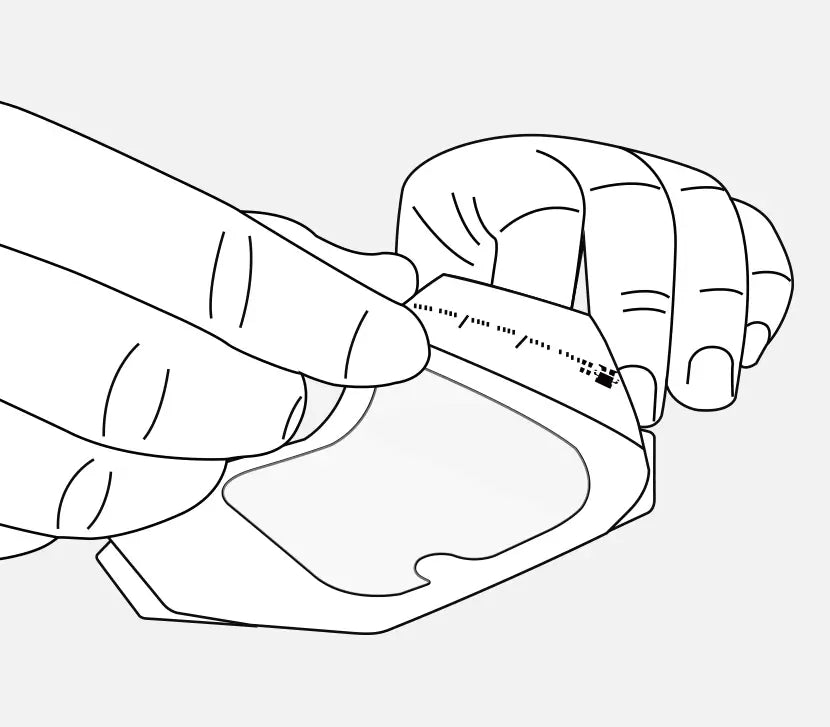
Tear
Tear from the side with the scale line.
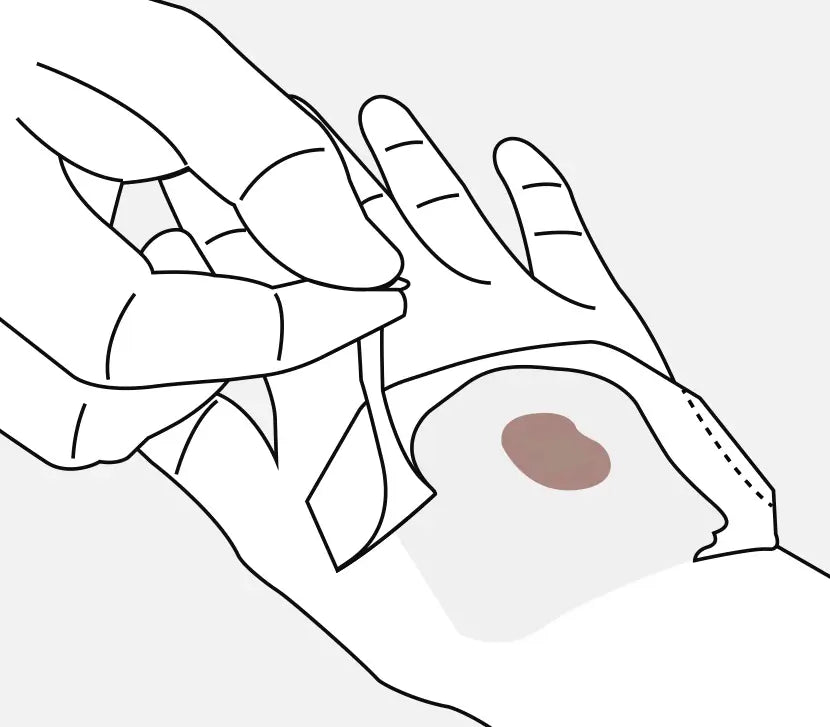
Cover
Cover the wound and peel off the frame paper.

Press
Gently press from the center outward.
You asked, we answered.
What types of wounds is this dressing suitable for?
- First-degree burns
- Superficial wounds and abrasions
- IV or catheter sites
- Healed wounds that need protection
- Secondary dressing to secure gauze or other dressings
- Post-surgical incisions
Is it waterproof?
Yes. Clear film dressings are fully waterproof, allowing patients to shower or bathe without removing the dressing, while still protecting the wound.
Can the dressing be used on infected wounds?
No. Transparent film wound dressings are not recommended for infected or moderate/heavily exuding wounds, as they are occlusive and may trap moisture or bacteria. For infected wounds, use a more absorbent or antimicrobial dressing.
How often should I change transparent medical dressing?
Typically, it can stay in place for up to 5–7 days, depending on the condition of the wound and skin. Change it if it becomes loose, soiled, or if fluid accumulates underneath.
Does it allow the wound to breathe?
Yes. While waterproof, the film is semi-permeable, allowing oxygen and moisture vapor exchange, which supports a moist healing environment and reduces risk of maceration.
Can it be used as a secondary dressing?
Absolutely. Transparent wound dressing are often used to secure other dressings like alginate, foam, or gauze, especially on contoured areas of the body.




